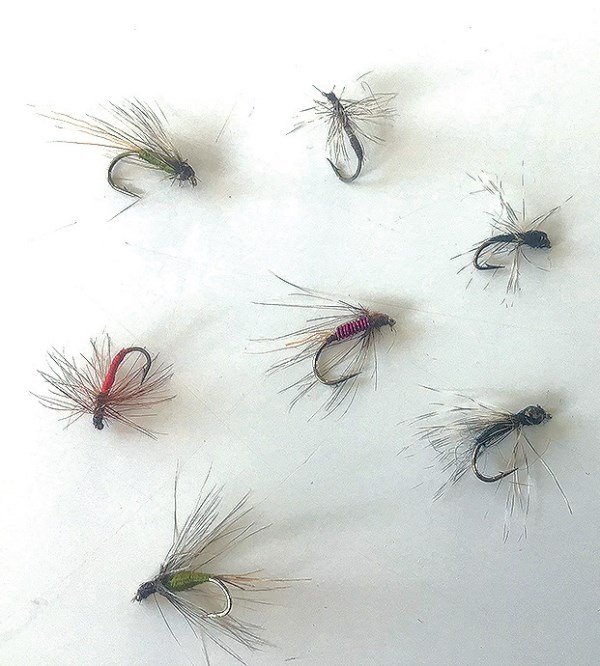
It was wet, it was cold, and it was winter. I was delicately caressing a new bit of fluff I had recently picked up, when my mind wandered back to Mrs Simpson, an old flame. A couple of seasons ago, Mrs Simpson and I were skunked on the Karamea River. Fish were selectively sipping at something on the surface. Something tiny and black with gauzy wings.
Flying ants filled the air all around us. Scrabbling through my fly box was fruitless because nothing quite matched. I made my apologies to Mrs Simpson as I tied on a small Black Gnat dry fly, which proved to be a poor substitute and I was rebuffed repeatedly. Back at the tying vice, I was still smarting about that day on the river while I set about tying a flying ant pattern using only black thread and a soft grizzle hackle. As I finished, I realised it was nothing new but in fact a very old and simple fly. It was a Wee Wet, or in modern speak a Soft Hackle. So simple, yet so effective, it could be tied weighted or, more traditionally, unweighted. It could come in a variety of colours, from natural browns and greens, to red, yellow, orange, and purple. Very old flies named Partridge and Orange, Purple and Grouse, and February Red can attest to their past popularity.
Although, sometimes less is best and Wee Wets should be tied sparingly, with a thin body and only two or three turns of soft hackle, on hook sizes 10 or smaller. In the case of flying ants, a size 16 or 18 would be perfect. They are a perfect uncomplicated fly for beginners due to their simplicity and minimal components. Swap out the thread body for fine copper wire and it becomes a cross dresser…. a ‘Flymph’. Wee Wets were traditionally fished across and downstream, swinging in the current with a slow retrieve. Mrs Simpson caught plenty of fish this way, but I have had great success fishing Wee Wets upstream, and as a dropper under a dry fly or in tandem with a larger weighted nymph.
Wee Wets or Soft Hackles… call them what you wish, but only a fool would hike for two days to reach the Karamea River and not have a few of them in the fly box.













